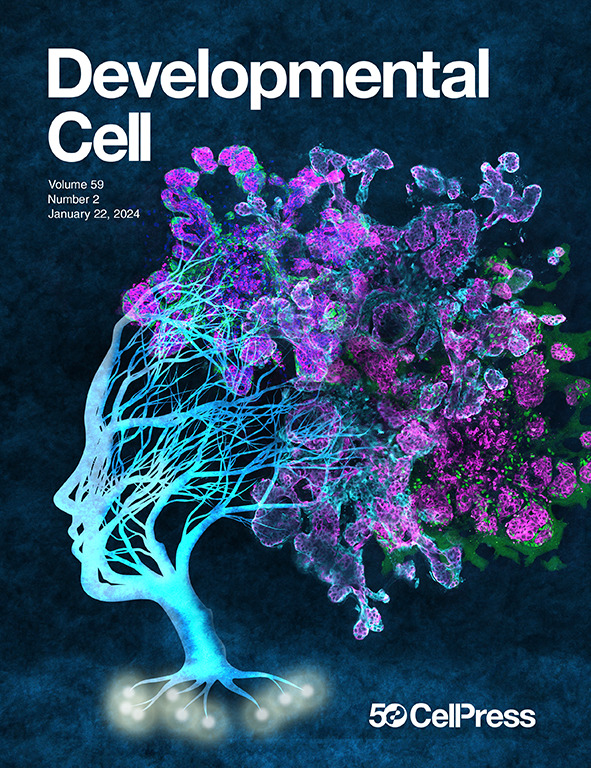盘状盘齿柱的集体振荡信号作为一个发育定时器,由一个有噪声的脉冲信号的弱耦合启动
IF 10.7
1区 生物学
Q1 CELL BIOLOGY
引用次数: 0
摘要
振荡现象在生物系统的控制中起着广泛的作用。在盘豆中,振荡环磷酸腺苷(cAMP)信号驱动集体行为并诱导时间发育基因表达程序。cAMP集体振荡是如何出现的,或者它们是如何编码时间转录信息的,人们仍然知之甚少。为了解决这个问题,我们确定了启动集体行为所需的转录因子。Hbx5活性依赖于cAMP,并为cAMP信号传导提供敏感的单细胞读数。广泛的随机脉动cAMP信号被发现先于集体振荡。随机信号传导诱导hbx5依赖的转录反馈,增强了信号敏感性和细胞-细胞耦合。这导致同步集体振荡的出现,随后激活GtaC转录因子并触发发育基因表达的变化。我们的研究结果表明,这种时间协调是由cAMP振荡幅度的变化和这些转录因子对cAMP调节的激酶ErkB的差异敏感性编码的。本文章由计算机程序翻译,如有差异,请以英文原文为准。

Collective oscillatory signaling in Dictyostelium discoideum acts as a developmental timer initiated by weak coupling of a noisy pulsatile signal
Oscillatory phenomena play widespread roles in the control of biological systems. In D. discoideum, oscillatory cyclic adenosine monophosphate (cAMP) signaling drives collective behavior and induces a temporal developmental gene expression program. How collective cAMP oscillations emerge or how they encode temporal transcriptional information is still poorly understood. To address this, we identified a transcription factor required for the initiation of collective behavior. Hbx5 activity is cAMP dependent and provides a sensitive single-cell readout for cAMP signaling. Extensive stochastic pulsatile cAMP signaling is found to precede collective oscillations. Stochastic signaling induces Hbx5-dependent transcriptional feedback, which enhances signal sensitivity and cell-cell coupling. This results in the emergence of synchronized collective oscillations, which subsequently activates the GtaC transcription factor and triggers shifts in developmental gene expression. Our results suggest this temporal coordination is encoded by changes in the amplitude of cAMP oscillations and differential sensitivity of these transcription factors to the cAMP-regulated kinase ErkB.
求助全文
通过发布文献求助,成功后即可免费获取论文全文。
去求助
来源期刊

Developmental cell
生物-发育生物学
CiteScore
18.90
自引率
1.70%
发文量
203
审稿时长
3-6 weeks
期刊介绍:
Developmental Cell, established in 2001, is a comprehensive journal that explores a wide range of topics in cell and developmental biology. Our publication encompasses work across various disciplines within biology, with a particular emphasis on investigating the intersections between cell biology, developmental biology, and other related fields. Our primary objective is to present research conducted through a cell biological perspective, addressing the essential mechanisms governing cell function, cellular interactions, and responses to the environment. Moreover, we focus on understanding the collective behavior of cells, culminating in the formation of tissues, organs, and whole organisms, while also investigating the consequences of any malfunctions in these intricate processes.
 求助内容:
求助内容: 应助结果提醒方式:
应助结果提醒方式:


